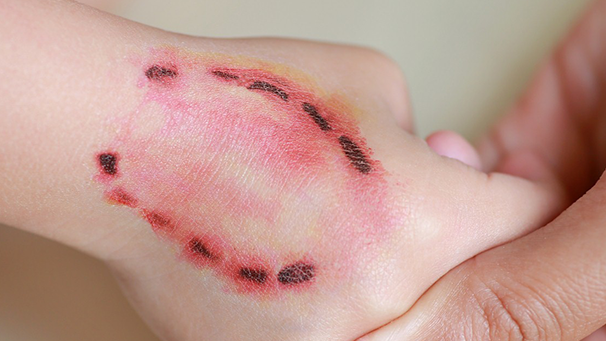The Health Ministry is cautioning soldiers against bringing dogs and cats from the Gaza Strip to Israel. This advisory follows an incident in which a dog brought from Gaza to a family in Herzliya had to be euthanized due to suspected signs of rabies. However, the suspicion was later dispelled after receiving test results. Recently, there has been a proliferation of photos and anecdotes on social media showing soldiers bringing animals out of Gaza.
Read more:
The Health Ministry has emphasized that "bringing dogs and cats into the State of Israel without proper approval in an unregulated and illegal manner can contribute to the transmission of diseases, including rabies, echinococcus (hydatid disease), leishmaniasis and tularemia." The Agriculture Ministry that due to the current absence of a fence between Gaza and Israel, dogs continue to enter Israeli territory. It is estimated that approximately 5,000 dogs have entered the western Negev region.
Tal Brosh, head of the Infectious Disease Unit at Assuta Hospital in Ashdod, says "there have been no confirmed cases of rabies in animals from Gaza for many years, unlike in the northern part of the country or the east. In those areas, there is a movement of rabies mainly from the Syrian region. In general, it is not of great concern for soldiers to bring dogs from Gaza. If someone wants to bring an animal into the State of Israel for any reason, it needs to undergo supervision and veterinary approval. This is especially important when it comes to dogs from Gaza, as there can be various other issues. It is highly irresponsible to bring animals from Gaza into Israel without the required approval."
"There are many stray animals in Gaza, and it is known that some of them cross the border without hindrance. This is becoming a significant problem. These are hungry and roaming dogs, and these packs become dangerous. The Agriculture Ministry is dealing with this issue, which is a very complex process. Rabies is a severe disease that kills dogs, and during the course of the disease, dogs become confused and aggressive," according to Brosh.
"Transmission occurs through bites. In humans bitten by a rabid dog, the virus spreads from the site of the bite to the brain, and the incubation period is long. The outbreak of the disease can be prevented if early treatment is received. This is done at health clinics. For those who are not diagnosed, rabies attacks the brain. It almost always ends in 100% mortality, and there is no effective treatment for rabies. To the best of my knowledge, the last time rabies was diagnosed in a human in Israel was about a decade ago," he said.
How should rabies be treated?
Rabies is a viral illness that affects humans and other mammals, causing inflammation of the brain (encephalitis). In the past, it was commonly known as hydrophobia, as one of the symptoms is a fear of water and difficulty swallowing liquids. Early signs of rabies can include fever and abnormal sensations at the site of infection. These initial symptoms are followed by a range of additional symptoms, such as nausea, vomiting, erratic movements, uncontrollable excitement, fear of water, paralysis in certain body parts, confusion and loss of consciousness.
Once symptoms manifest, the outcome is almost always fatal, regardless of treatment. The incubation period for rabies, which is the time between contracting the virus and the onset of symptoms, typically ranges from one to three months. However, this time frame can vary, ranging from less than a week to over a year. The duration depends on the distance the virus must travel through peripheral nerves to reach the central nervous system, meaning a leg bite would take longer to manifest than a bite to the upper torso.
What do I do if I'm bitten?
If you are bitten by a dog with rabies, there are several steps you should take:
1. Evaluate the situation: Determine if the dog is showing any signs of illness or abnormal behavior. If the dog appears healthy and is owned by someone, you can ask for information about the dog's vaccination history to assess the risk of rabies transmission.
2. Clean the wound: Wash the bite wound thoroughly with soap and water for at least 5 minutes to reduce the risk of infection.
3. Seek medical attention: Contact a health care provider or seek medical attention as soon as possible. Describe the incident and provide details about the dog, such as its appearance, behavior, and vaccination status. The health care provider will assess the risk of rabies transmission and determine the appropriate course of action.
4. Rabies vaccination: Depending on the circumstances, you may need to receive a series of rabies shots as a preventive measure. This typically involves receiving a medication at the site of the bite to neutralize the virus, followed by a series of vaccine shots over a period of time.
5. Observation and evaluation: If the dog is available for observation, it may be confined and monitored for signs of illness for a period of 10 days. This can help determine if the dog is infected with rabies. However, if the dog shows any signs of illness during the observation period, it should be evaluated by a veterinarian, and you should seek medical advice regarding the need for rabies prophylaxis.
"The rabies vaccine contains pre-formed antibodies and is administered immediately when treatment is needed, as waiting for the body to generate its own antibodies is not feasible. It's important to note that the rabies vaccine is not a cure for rabies and does not offer protection once the disease has already developed," according to Dr. Bibiana Hazan, the head of the infectious diseases department at Emek Medical Center in Afula.
 Dr. Bibiana HazanPhoto: Private album
Dr. Bibiana HazanPhoto: Private album"The vaccination protocol typically involves four injections given into the muscle. The initial injection is administered as soon as possible after the bite, followed by three additional injections on the third, seventh, and fourteenth day after the first dose. In the event of a bite, it is crucial to confirm the validity of the tetanus vaccine. If the previous vaccination was received within the past five years or even earlier, a booster dose is necessary. It is recommended to receive the booster dose even if the date for the next vaccination is unknown," she said.




